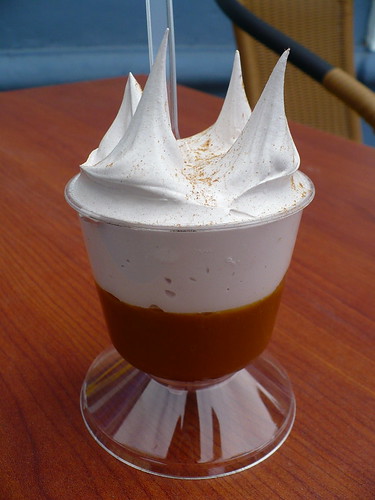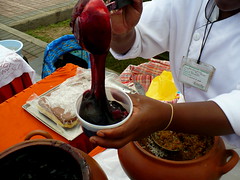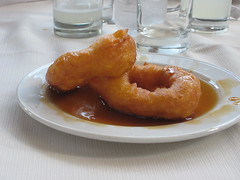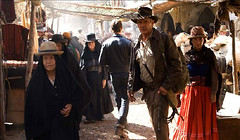Eating in Lima – What not to miss – Desserts
Part six- Desserts
Peruvian food was all but unknown to the world a decade ago, but this has begun to change in recent years. In 2004 an article appeared in The Economist. “Peru can lay claim to one of the world’s dozen or so great cuisines“. As the news spread of the discovery of one of the world’s best kept secrets, the excitement began to build. In 2006 at the Madrid Fusion Fourth International Summit of Gastronomy, one of the field’s most important conferences, top chefs, critics and journalists were blown away. The rumours were true, and the city of Lima, where many of the nation’s 400+ national and regional dishes can be found in cheap local haunts and fancy restaurants alike, was declared the Gastronomic Capital of the Americas.
——————–
Desserts

Suspiro a la Limeña
To say that Peruvians have a sweet-tooth is like saying that fish enjoy being in water. It’s plainly clear and a huge understatement! In fact, Peru is one of only two countries in the world for which Coca Cola was forced to change its traditional recipe in order to make any inroads into the market – they had to make the formula sweeter. Many different desserts are enjoyed across the country and many of them are found in Lima, many of them also originating in Lima.
Suspiro a la Limeña is the classic example. It gets its name for being “as soft and sweet as a Lima woman’s sigh”, suspiro meaning sigh in English. It is made from condensed milk, egg yolks, vanilla and a dash or port wine. The sweet sticky mixture is finally covered with whipped meringue and a dash of cinnamon. Despite its small size, it quickly becomes overwhelming, and I always find finishing one to be tricky.
Picarones are made from deep frying pumpkin batter that has been shaped into rings. When crispy, but still soft they are removed and drenched in a brown sugar syrup or honey. Picarones are a much loved street food, and the street is often the best place to eat them.
Arriving to Peru through immigration are alfajores from Moorish Spain and North Africa, two soft sugar-powdered cookies sandwiching manjarblanco (boiled off milk and caramel), and Panatón from Italy, a sweet baked bread with small pieces of boiled fruits. Both have been widely welcomed and adopted, now being considered as Peruvian as anything originating here.

Mazamorra Morada
But the dessert perhaps most typical of the region is Mazamorra Morada. This delicious thick purple goo is made from the same purple corn as the purple soft drink Chicha Morada and is best served with chopped fruit and a sprinkle of cinnamon.
Despite the generous portions served in Peruvian restaurants, you’ll thank yourself for leaving just that little extra room for dessert. The three typical Limeño desserts above can often be found served in the street, or in small cafes – so if you see them, order them. Alternatively, top off a meal from one of the other Eating in Lima articles with the food-type’s associated dessert, try them in these locations:
Bolivariano – (all) Psj. Santa Rosa 291, Pueblo Libre
Tio Mario (picarones) – Puente de Suspiros, Barranco
Or almost anywhere else!
——————–
What not to miss:
Seefood Heaven | Creole Classics | Afro-Peruvian | China-Influenced | Fast Food | Non-Limeño
Tags: coca cola, dessert, eating in lima, food, manjarblanco, mazamorra morada, picarones, suspiro a la limeña






![Uru Chipaya face extinction through climate change [Featured]](http://farm4.static.flickr.com/3010/2682884000_4940f5ee1e_m.jpg)




![A River Cries Out: The Rimac River Project [Featured]](http://farm4.static.flickr.com/3210/2681816738_3bc31ea46f_m.jpg)